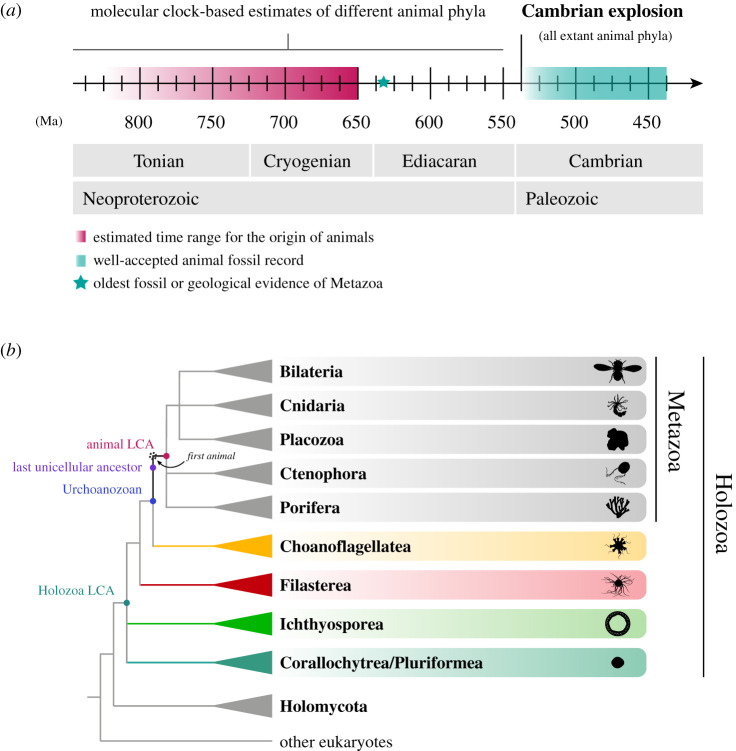Figure 1.
Phylogenetic classification of animals and their unicellular relatives. (a) A timeline of different events during early animal evolution. The transition to animal multicellularity, and therefore the origin of the first animals, occurred sometime at the end of the Tonian period, according to molecular clock estimates. The oldest fossil or geological evidence of recognizable animals dates back to the Ediacaran period, with molecular clocks extending the emergence of different animal phyla back to the Cryogenian [15–17]. Time units are million years ago (Ma). (b) Cladogram representing the major clades of the tree of animals and the major groups of unicellular relatives of animals: choanoflagellates, filastereans, ichthyosporeans and corallochytreans/pluriformeans. Coloured nodes indicate different ancestors that we can reconstruct and that are important to understand the transition to animal multicellularity; the highlighted internal branch (from the Urchoanozoan to the animal LCA) indicates the animal stem (see box 1; LCA = last common ancestor). Uncertain positions within the animal tree [18–23] and within Holozoa [24–26] are represented with polytomies.

